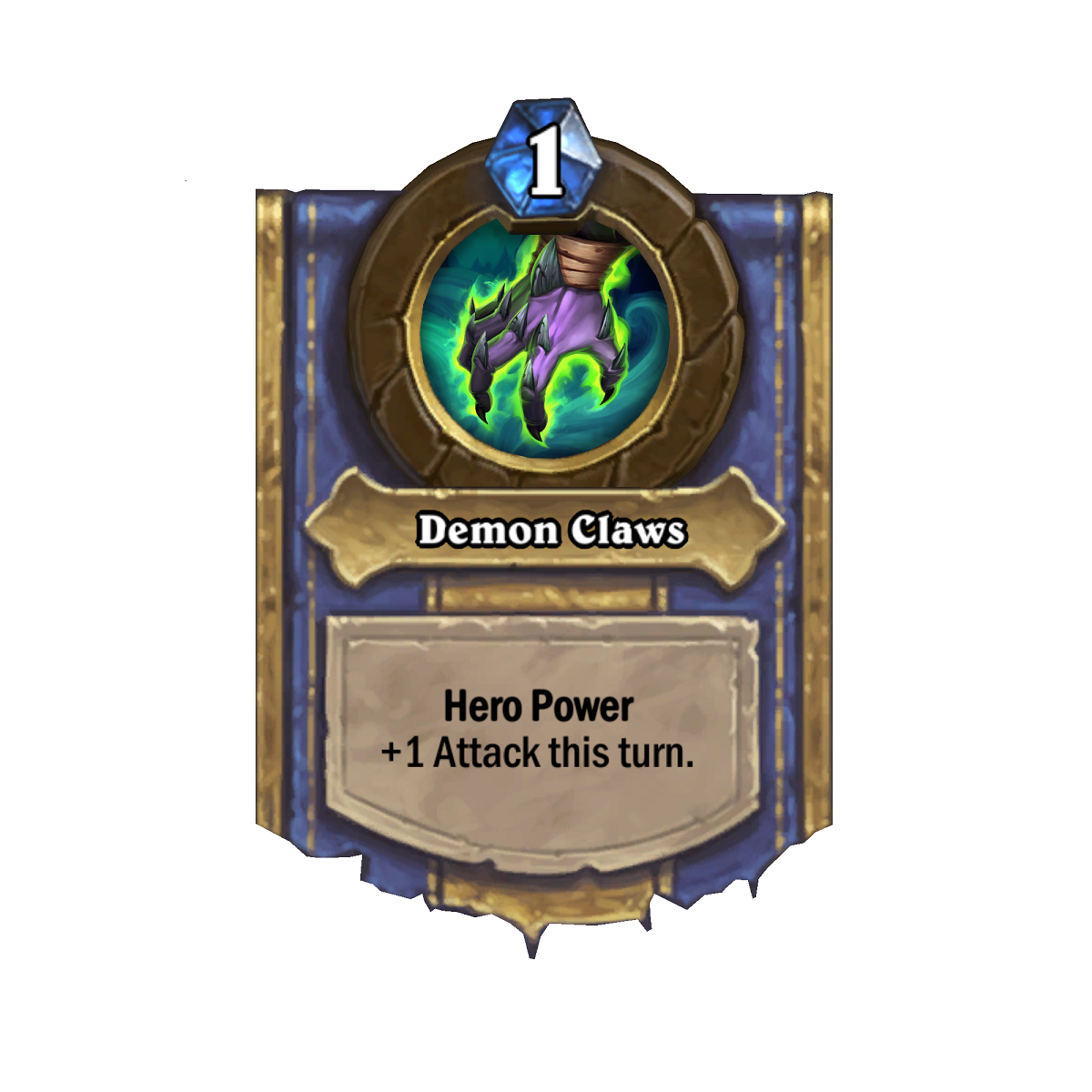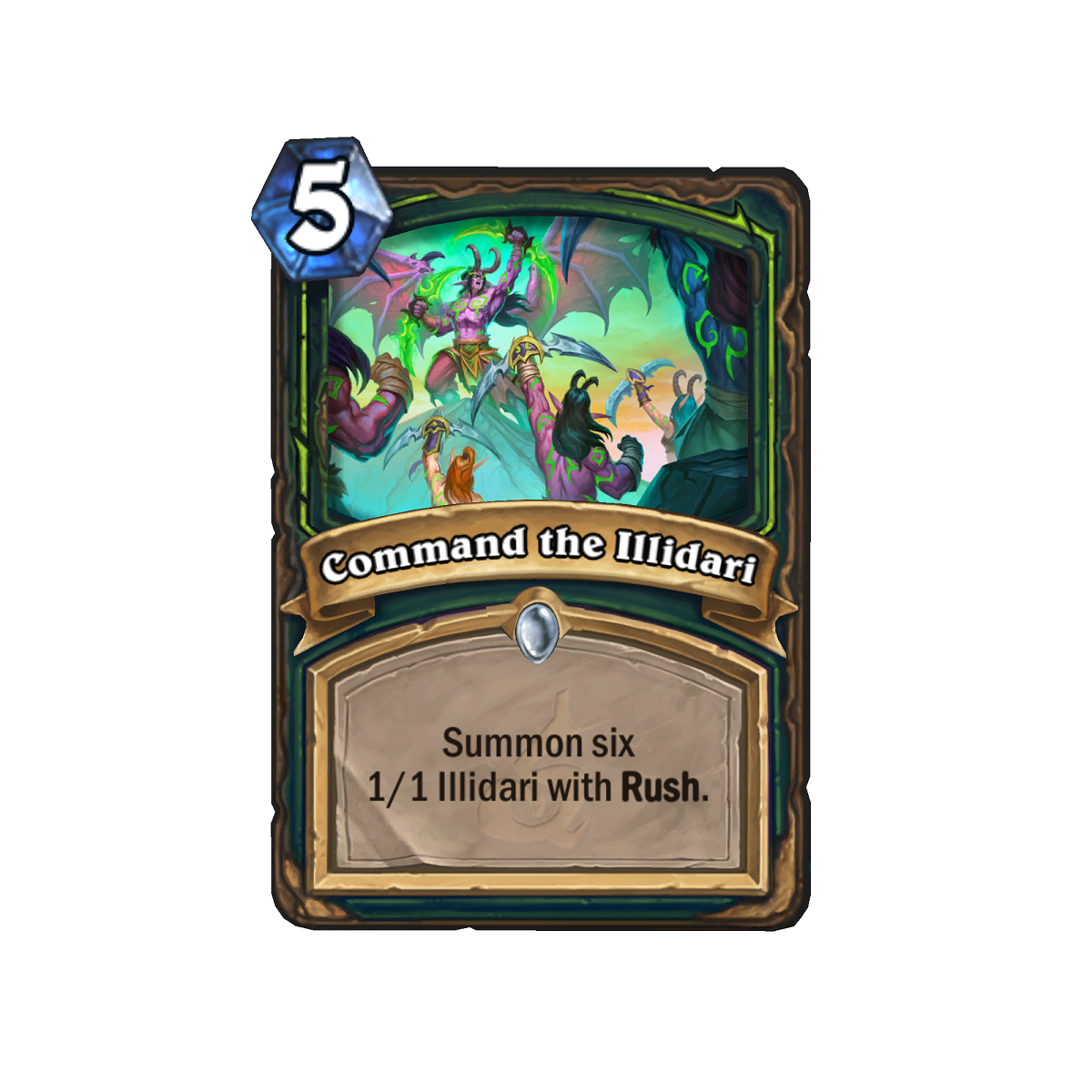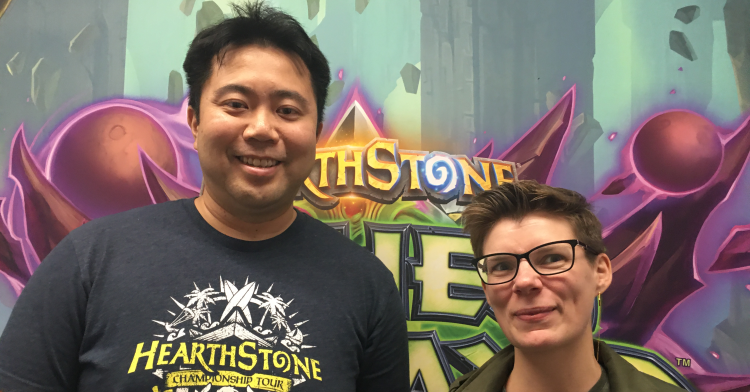GamesBeat: How long did it take to get the demon hunter’s hero power to this point?

Above: Hearthstone’s first 1 mana hero power.
Chang: At least three or four months of just working on the hero power.
Chamberlin: It came in hot.
Chang: It came in pretty late. We had a variety of hero powers. We got it into final design and we were still iterating on it. We tried three different versions in final design. Then we finally got to that one. It just took persistence, us trying — it wasn’t like we were only working on the hero power. We were still working on cards and everything else in the set. We had versions that we thought were good, that were OK, but it just didn’t feel right. Sometimes when things don’t feel right, we just keep trying. It comes back to that epiphany point. It just feels right, and you know that you’ve found the thing.
June 5th: The AI Audit in NYC
Join us next week in NYC to engage with top executive leaders, delving into strategies for auditing AI models to ensure fairness, optimal performance, and ethical compliance across diverse organizations. Secure your attendance for this exclusive invite-only event.
Being a new class, the hero power is so iconic and important for the class. We had to make sure it was right. We spent a lot of time on it. We went through so many different versions of it. It ended up coming in a little late, but once we got it, everyone was super excited. We were super happy. From there, everything just fell into place. Once we had that, that core piece, everything else just flowed from that super naturally. Everything else was a lot easier to work on once we had that core thing that we knew was right.
Power to the hero
GamesBeat: The demon hunter is coming into a game that’s six years old. How does it fit into the Wild set for people who’ll play it in Wild?
Chang: Players in wild will have access to it along with all the other cards, and then eventually — we have a set of the starter cards that are part of the initial set — they’re part of Year of the Dragon, and they’ll rotate after a year. From that point on, they’ll be unique to wild. Some of them may eventually stay in if we decide to keep them in standard, but it’ll be something that, over time, players will be able to continue to explore. For the expansion, the expansion for this year, demon hunter will be getting 15 cards instead of the normal 10 we give to other classes, to catch them up so that by the time this year is over, they’ll have about the same number of cards as the rest of the classes in standard.
GamesBeat: What will the demon hunter’s upgraded hero power be when you play it with Sir Finley Mrrgglton?
Chang: Plus-2 attack.
GamesBeat: Are you concerned about people possibly finding new uses for some of the Grand Tournament cards that are based off the hero power with Inspire?
Chamberlin: We’re excited!
Chang: I wouldn’t say concerned. It’s more exciting to see that exploration. People will have a lot of fun with it. It’s working with Inspire, working with the upgraded hero powers. It’s another angle people can explore and experiment with.
GamesBeat: Did you feel confident with Outcast after how the idea worked with Soul Infusion, which was a left-based card, and Stargazer Luna, a right-based card?
Chang: We had explored those, caring about the position in your hand, with those cards. They were received pretty well. As we thought about demon hunter and that keyword coming into play — we had tried other versions of Outcast, but once we landed on this version, it felt fun to play. It’s interesting that we can explore a mechanic like this in the digital space. It’s not something you could do in a traditional card game, because people constantly shuffle their hands as they play. In something like Hearthstone, your hand positions are predetermined. It’s an interesting choice, how you get the Outcast cards from the middle to the edge. It can influence how you deck build. You may want to build a very fast deck with a lot of cheap cards where it’s easy to get cards out of your hand, but if you’re playing a more control style, then you’ll have to think hard about the types of Outcast cards you want in there. The bigger cards might muck up your hand and make it harder to move around. It’s been interesting. It’s a very critical point of decision when you draw an Outcast card from your beginning turn draw, because you might get an Outcast card and you may have a plan in the back of your mind, but once you see the Outcast card, well, I kinda want to play this now, because it’s activated. There’s a lot of interesting decisions as you play with that new keyword.
Chamberlin: Stargazer Luna was definitely a very reasonable comparison. It’s a fun one, because Stargazer Luna gets you half of Outcast, and that’s already pretty cool. With Outcast, if it clearly isn’t the right moment for that card, you can get a second chance at it later by figuring it out. Having both of those options makes them really fun to play with.

GamesBeat: Going to the token-style of play for demon hunter, one thing I liked was that it wasn’t just an iteration of token druid or token paladin or token shaman, where you’re buffing the tokens. At what point did that crystallize, that demon hunter didn’t care about buffing minions?
Chang: It was part of — as we were talking about the class idea of demon hunter and the type of things we wanted to allow it to do, how to differentiate it from other classes, we wanted to identify the archetypes that it would play. The soul magic style was more about sacrificing your minions, but it felt more like a combo style of deck to play. You had the aggressive archetype, and then the control archetype with the big demons, but we also wanted to have a combo style of play with the soul magic deck. We made cards that cared about that, where you can feel smart about how you sacrifice. You can still have power spikes, but they happen in a different way than other classes had. You do the up front sacrifice and it’s sort of a payment to get that big powerful effect from Nethrandamus, for example, one of the legendary cards. It was interesting to develop that different archetype and make it feel different than playing other decks that care about going wide.
GamesBeat: How does the Dormant mechanic apply to the actions of Outland? How does it work with Outland thematically?
Chamberlin: Thematically the big thing with Dormant is, if you’re familiar with WoW lore and Illidan, there are some entities, especially in Outland, where they’re just — they’re powerful enough that you don’t even try to destroy them. You just imprison them, lock them away. It happened to Illidan for 10,000 years. He’s very salty about it. The imprisoned demons are a reference to that fact, that sometimes what you do with power is you just lock it away if you can’t completely defeat it. The imprisoned demon cycle are these cards that, when you play them on the board, they’re immediately Dormant for two turns. Then when they wake up they’ll have some really powerful effect. You have things like Imprisoned Observer that you can play pretty early on, and then once it wakes up, it deals two damage to all enemy minions. Thematically it’s a nod to Illidan’s imprisonment, but mechanically it’s been fun, because you both get to see it coming. Your opponent, in the case of the Observer, knows that two damage is coming to any minions that they still have on the board at that point. They have time to react to that, time to prepare. That’s true across all of the imprisoned demons in different ways. With Imprisoned Satyr, if you play it without having the right minion in your hand, then you have two turns to try to draw it, or you have two turns to dump a bunch of minions on the board so you can make sure it buffs exactly the right thing in your hand.
GamesBeat: Would Doomsayer or another one of those big board wipes get rid of it?
Chamberlin: No. When minions are dormant, they’re untouchable.
GamesBeat: Even the Shifting Sands Priest spell, which silences everything?
Chamberlin: Yep, it’ll survive that. It’ll survive Twisting Nether. They’re very stubborn. [Laughs]
Chang: If Doomsayer activates the turn it wakes up, it will still have that effect and destroy it.
GamesBeat: Whereas Doomsayer is like a time out, the Dormant cards are puzzles, correct?
Chamberlin: Yes, very much so.
Van Cleef’s reprieve
GamesBeat: Why not Hall of Fame Edwin Van Cleef?
Chang: We definitely talked about Edwin. It’s a little trickier with him, because he’s one of the class legendaries. It’s something that talked about and will continue to talk about. It’s a tough thing, where we wonder — when we decide to Hall of Fame cards, we wonder if it’s better to Hall of Fame or better to nerf. That’s one of the discussions we’ve constantly been having about Edwin. At this time we decided those were the cards we wanted in Hall of Fame, and in the future we could change.
GamesBeat: He’s a class legendary and that creates a problem, but you’re getting rid of Velen, who’s a class legendary.
Chang: A part of it is that we had a cool design for Velen … and we would have to probably replace Van Cleef with a different legendary as well. It’s something that we’ve talked about. It just isn’t the time for us to do it yet.
GamesBeat: If people are getting tired of facing that same tactic over and over again for the life of the game, does that tell you as designers that it’s time to change that?
Chang: It’s definitely something we’re aware of. We’ve had a lot of conversations about Edwin, and we’ll continue to do so. If we come up with a solution that we’re happy with, we’ll act on it then.


